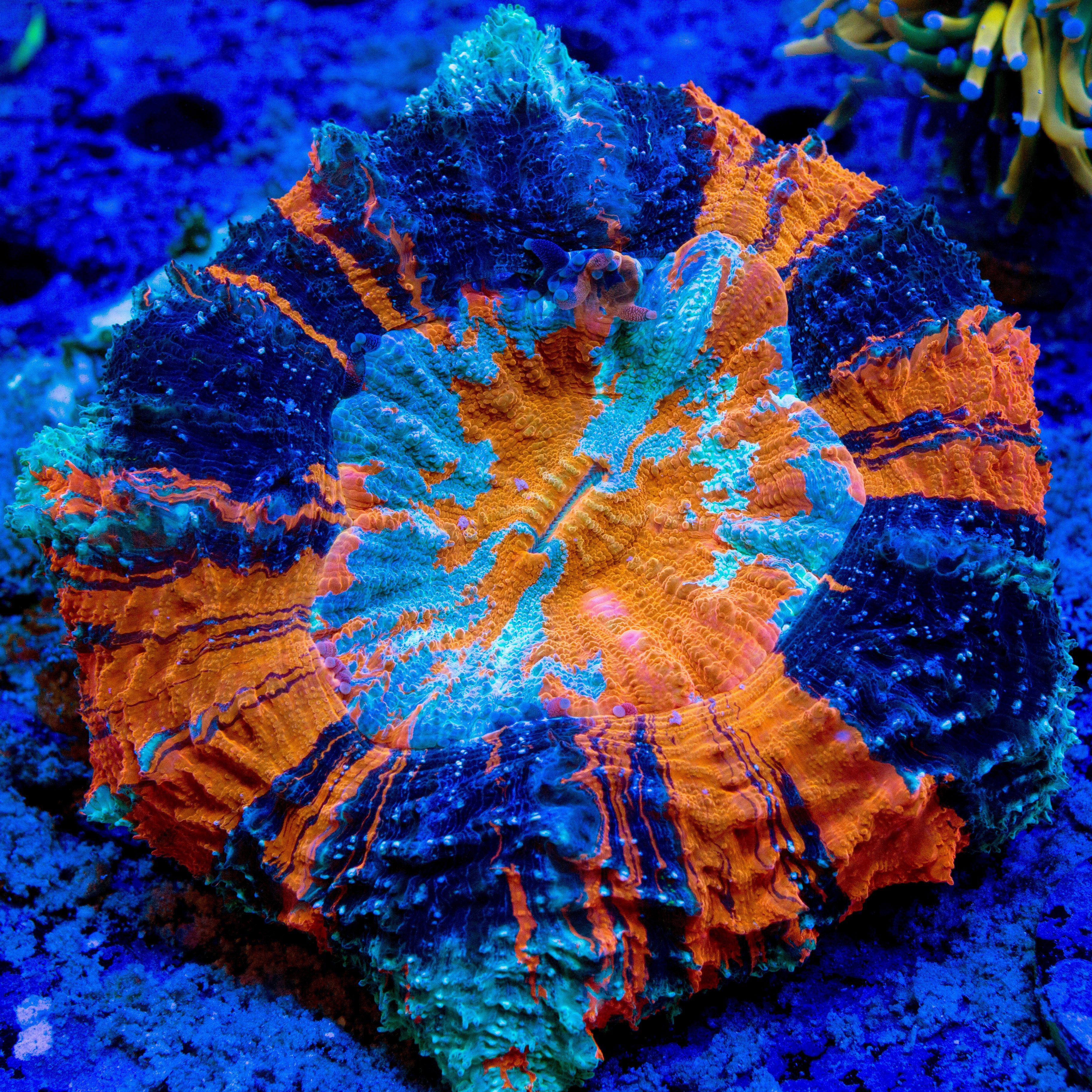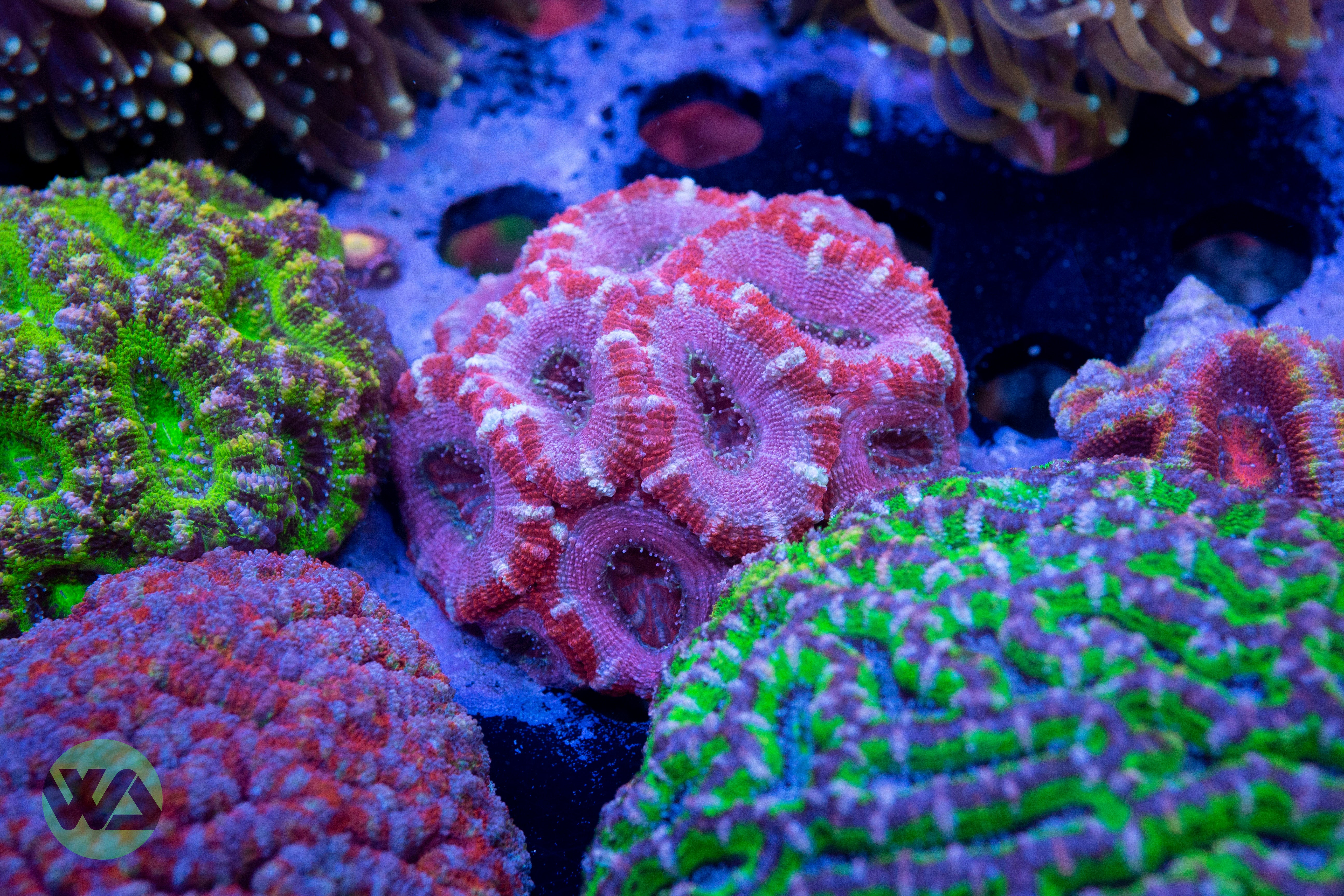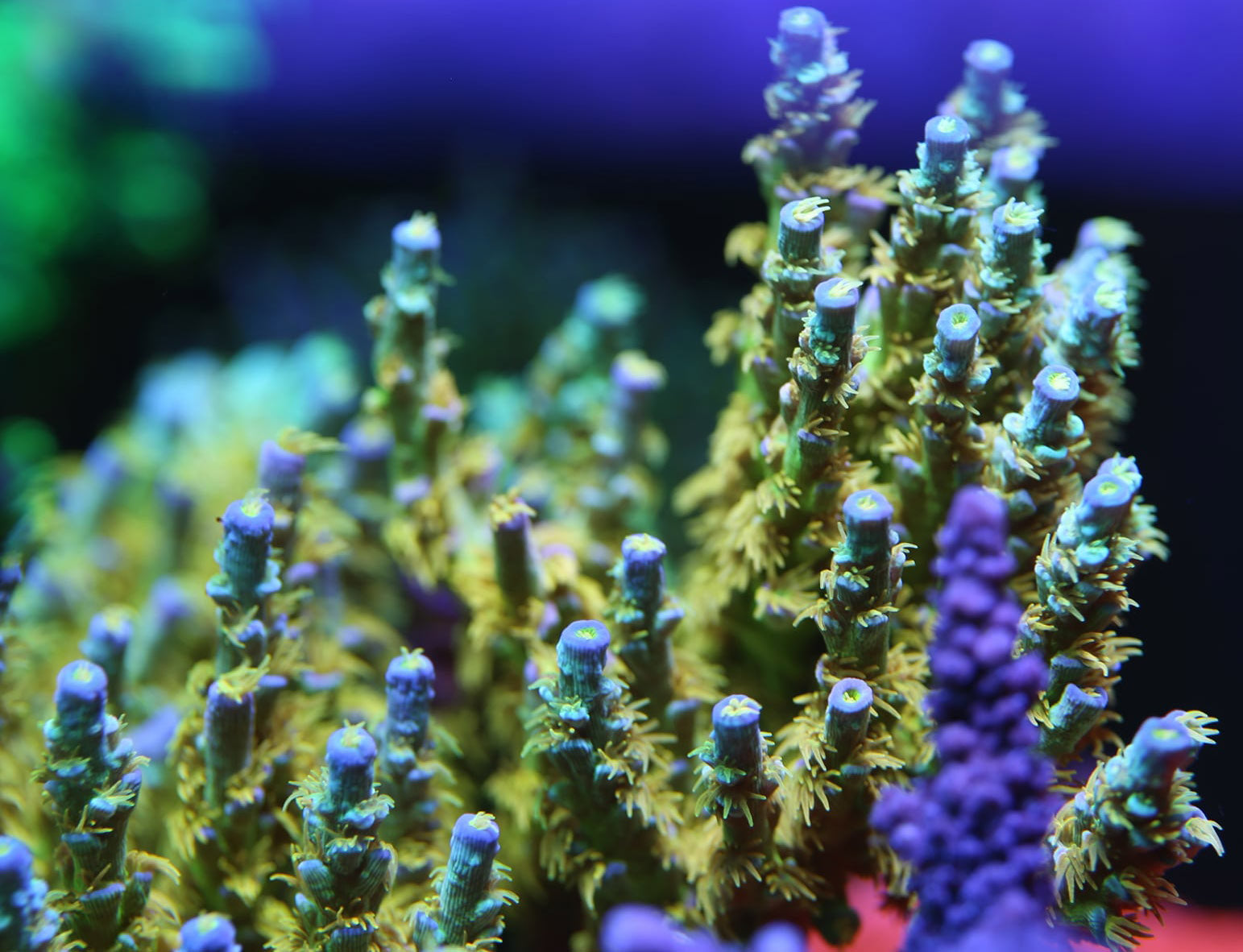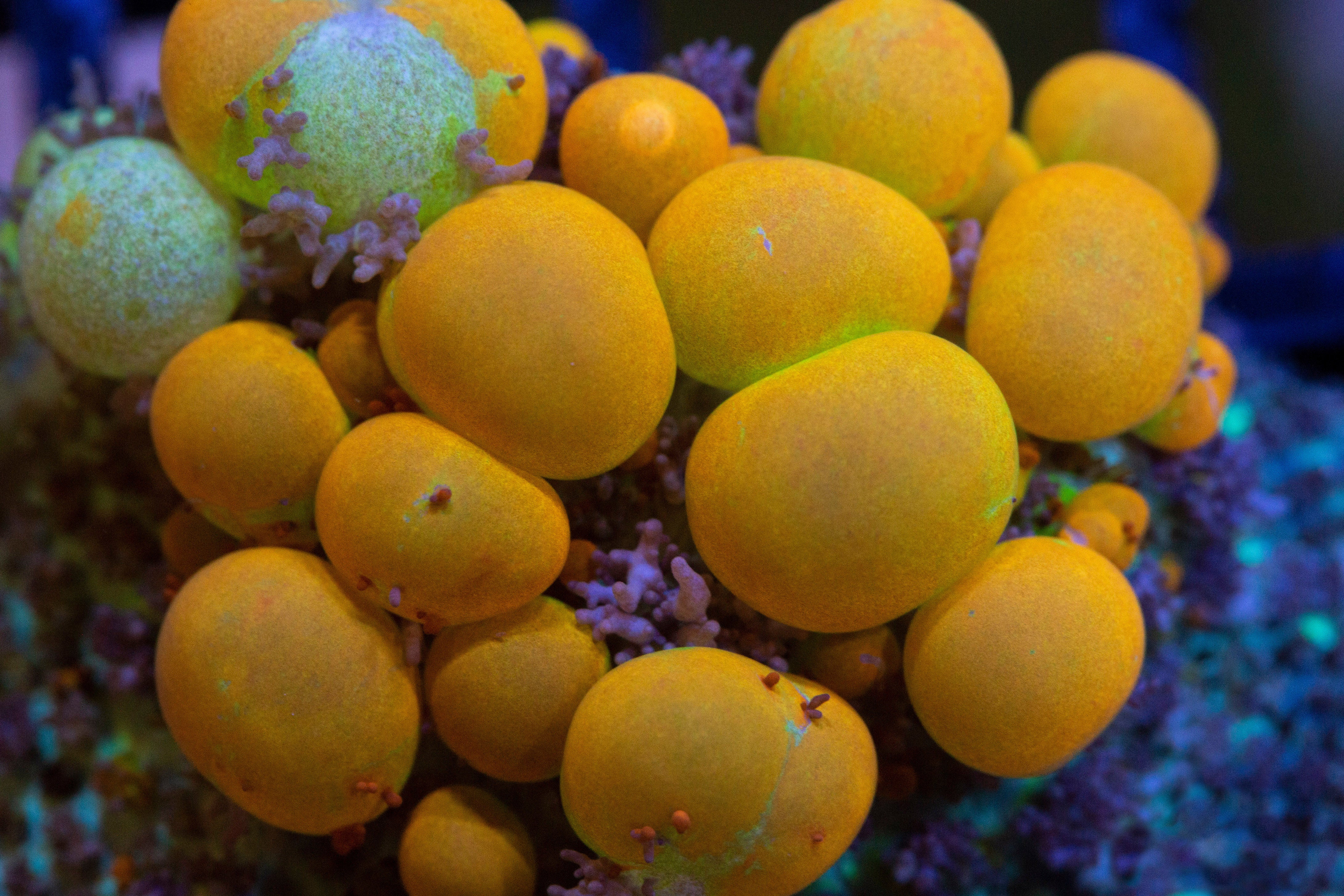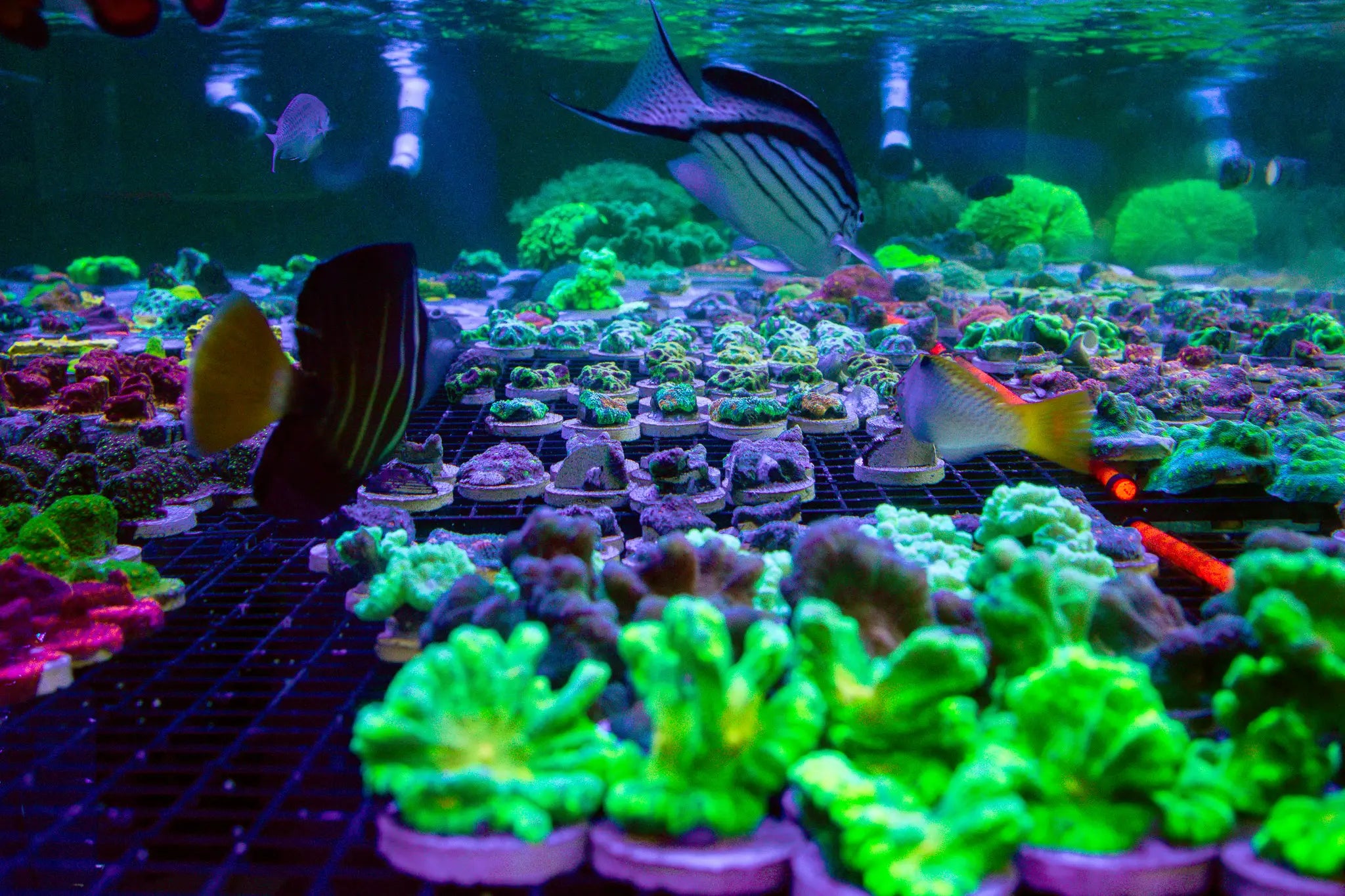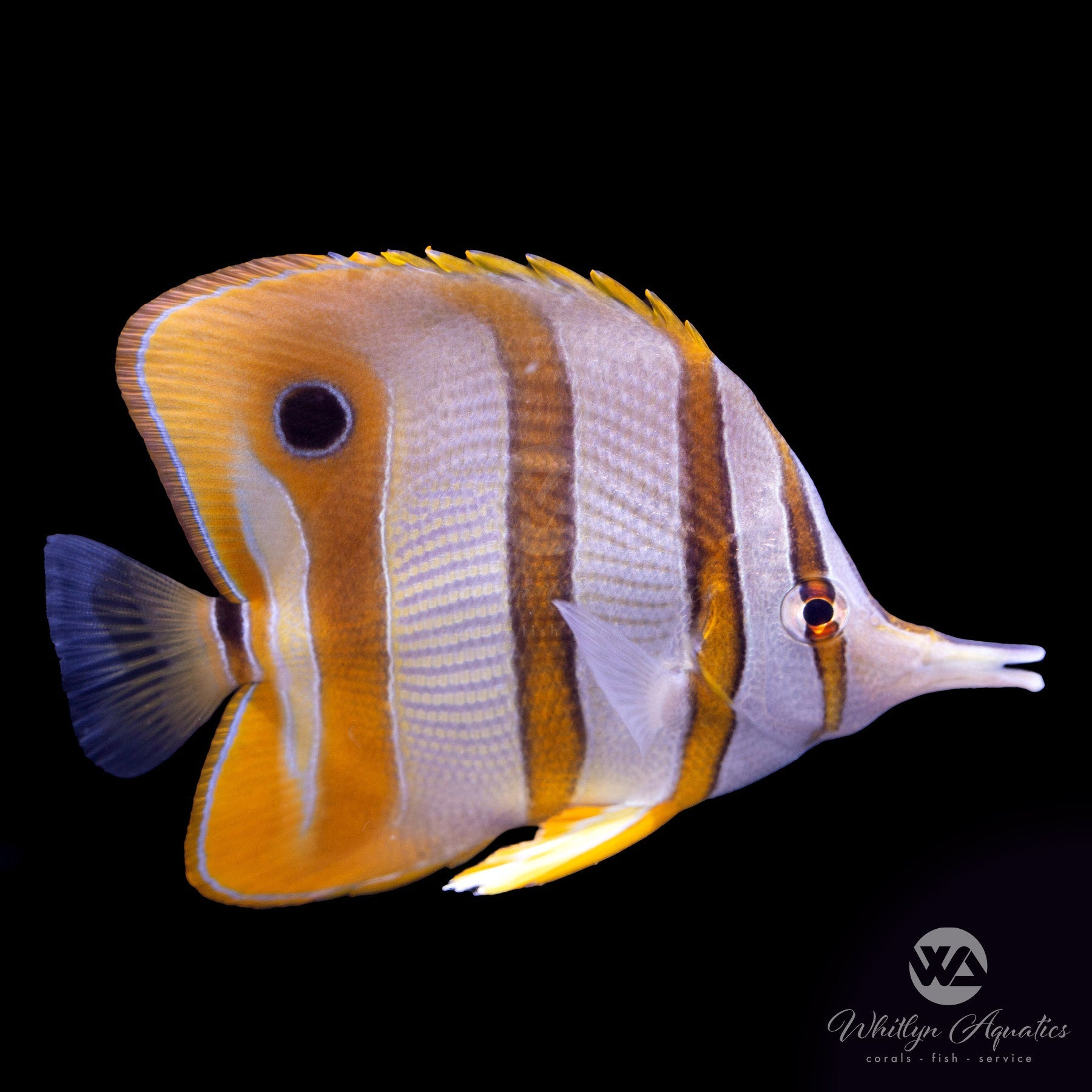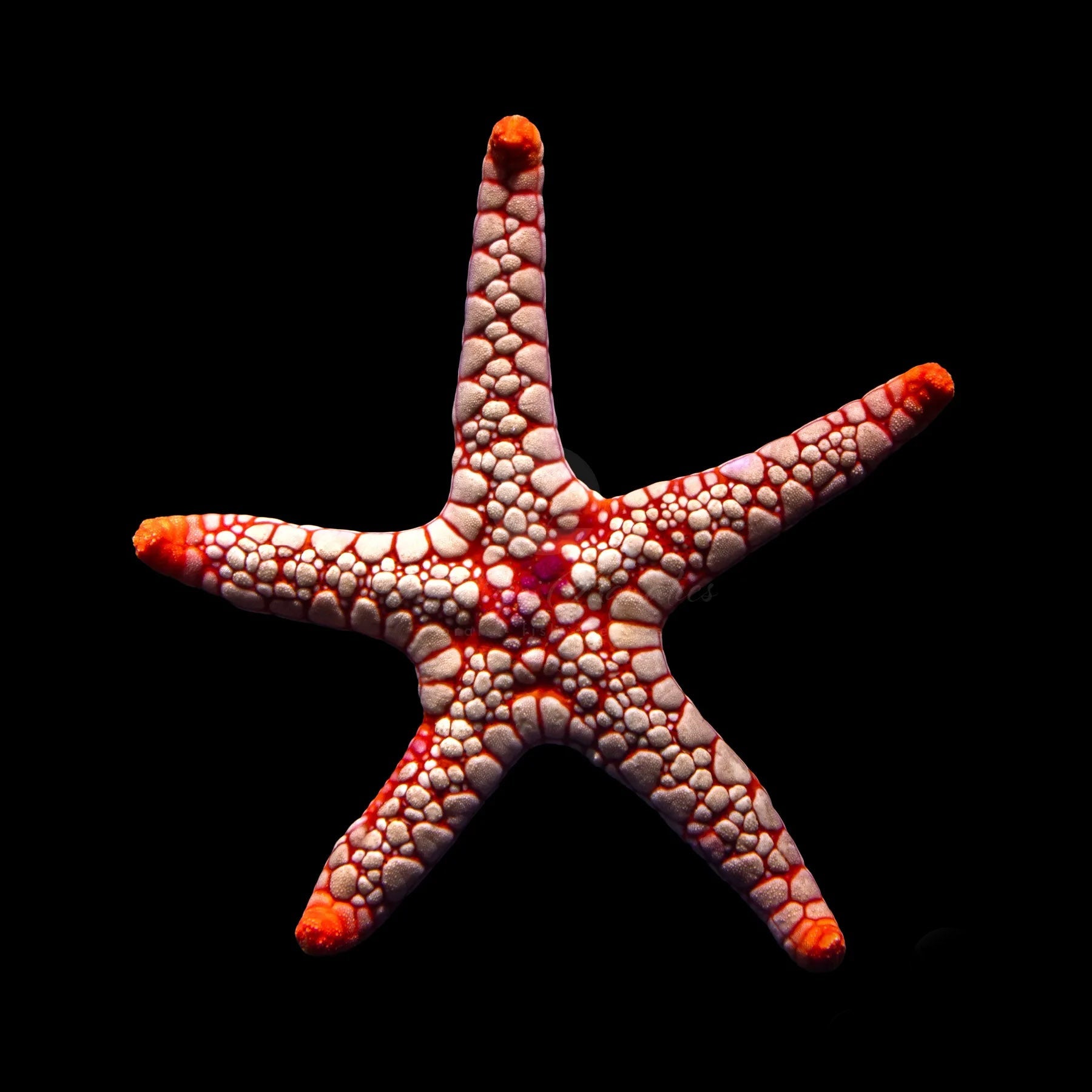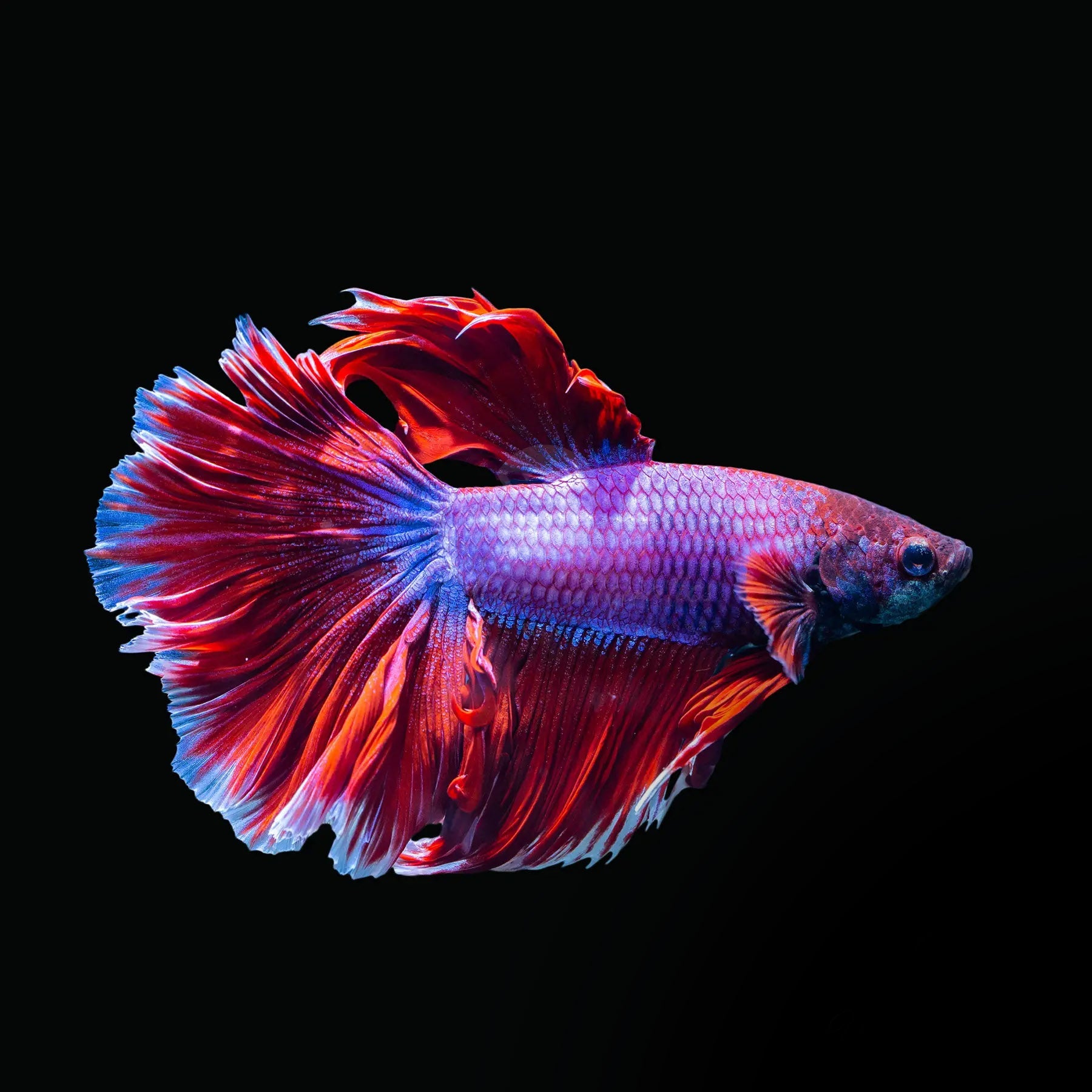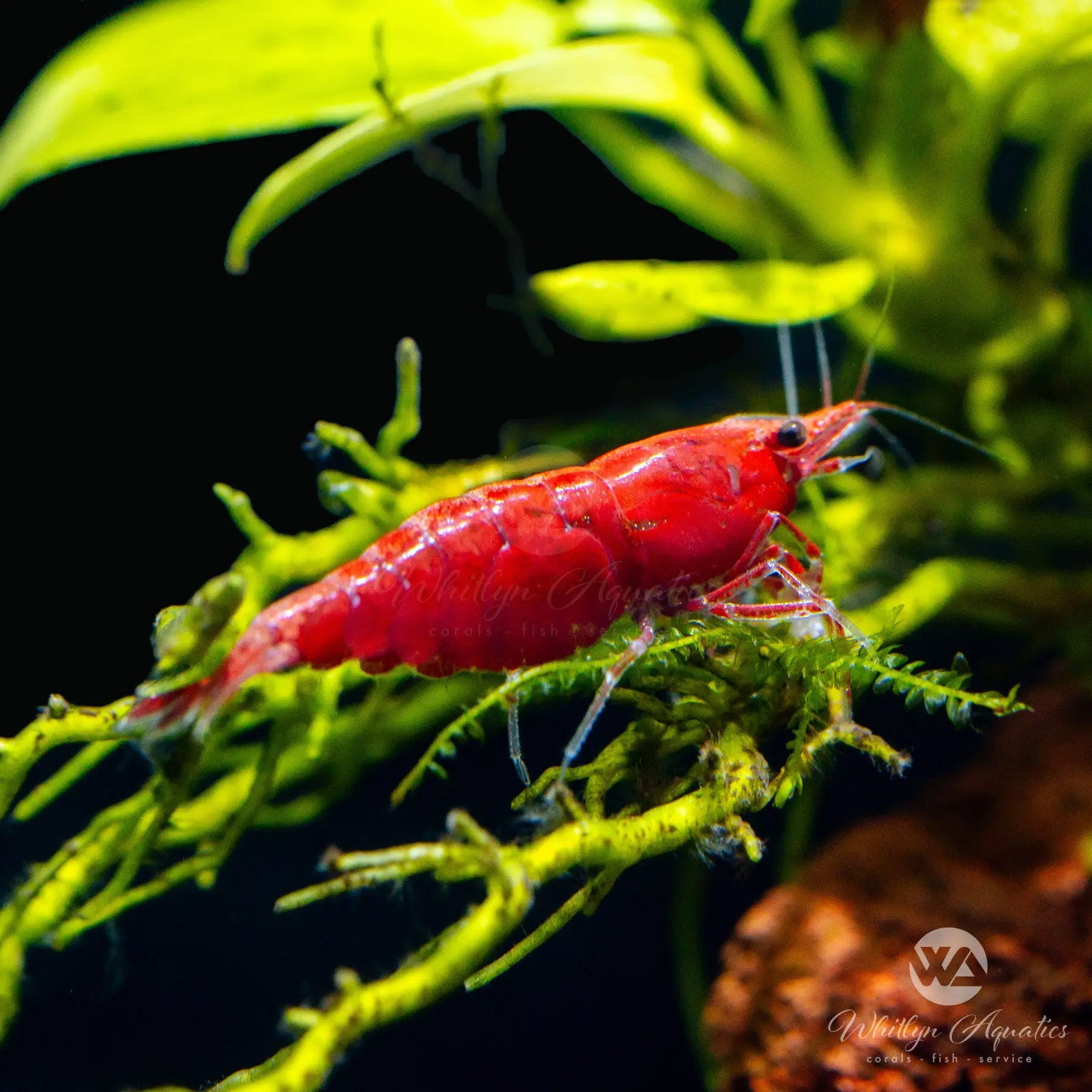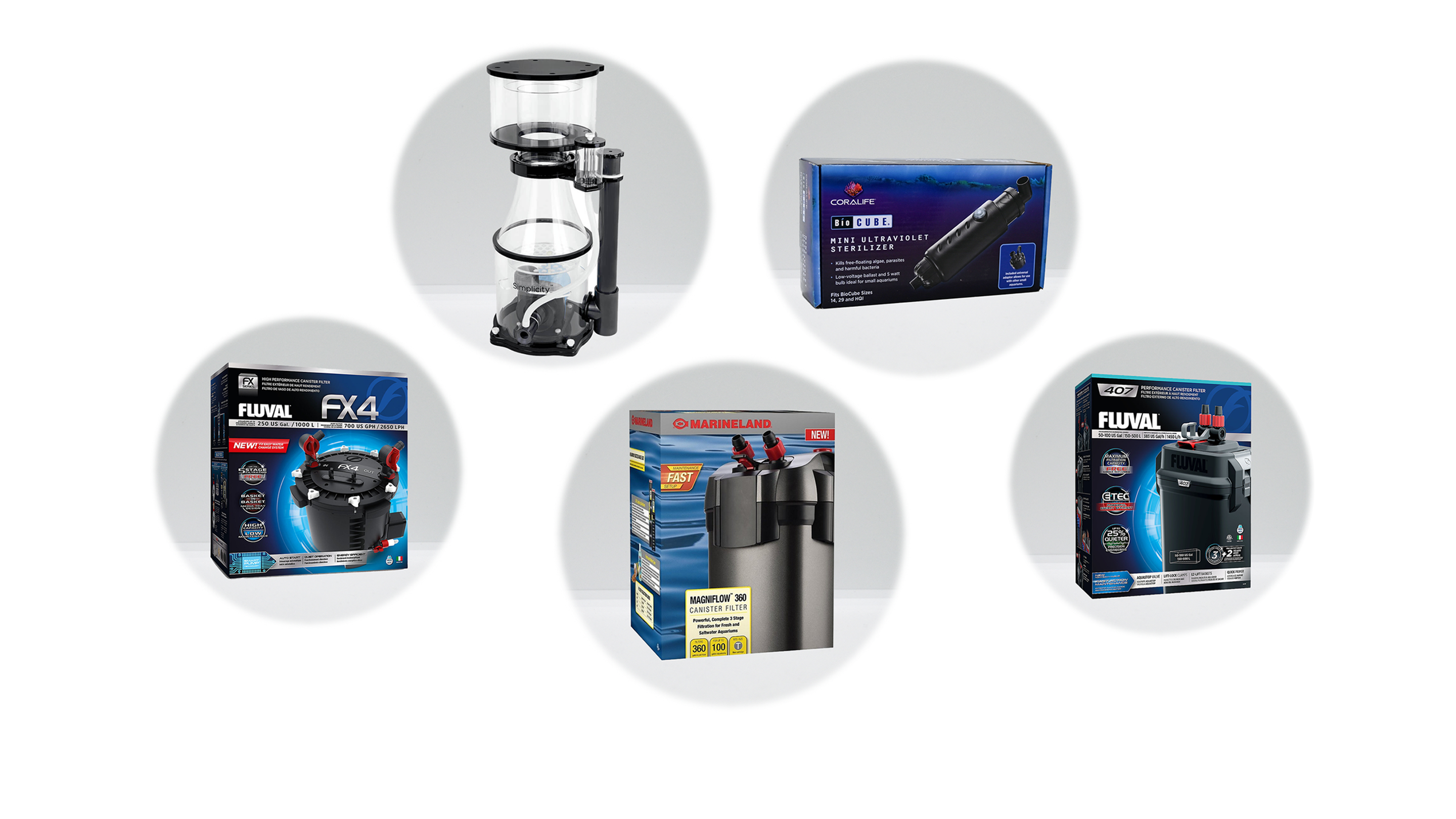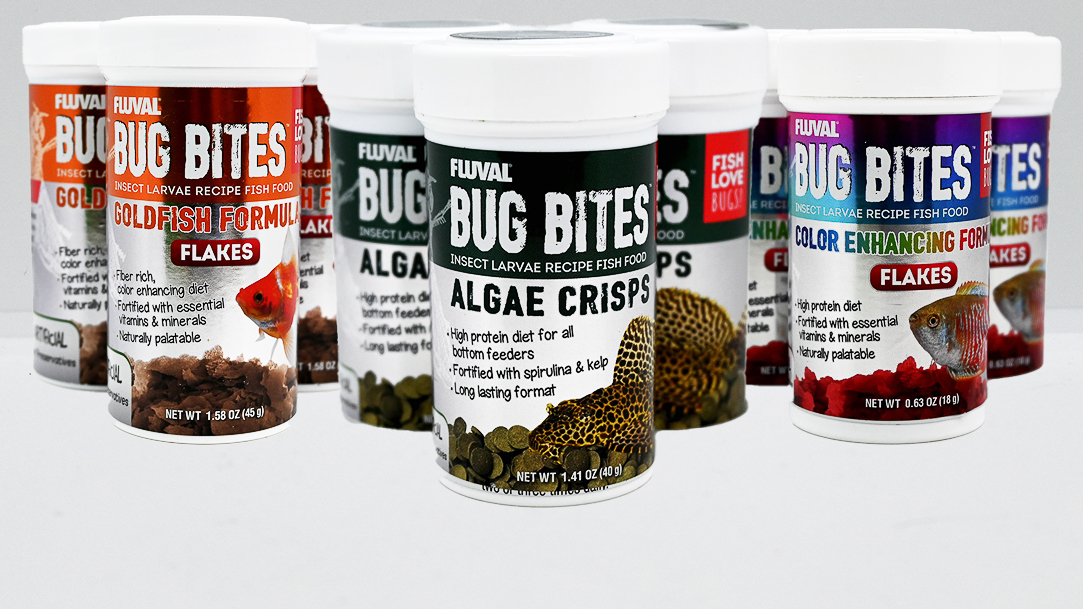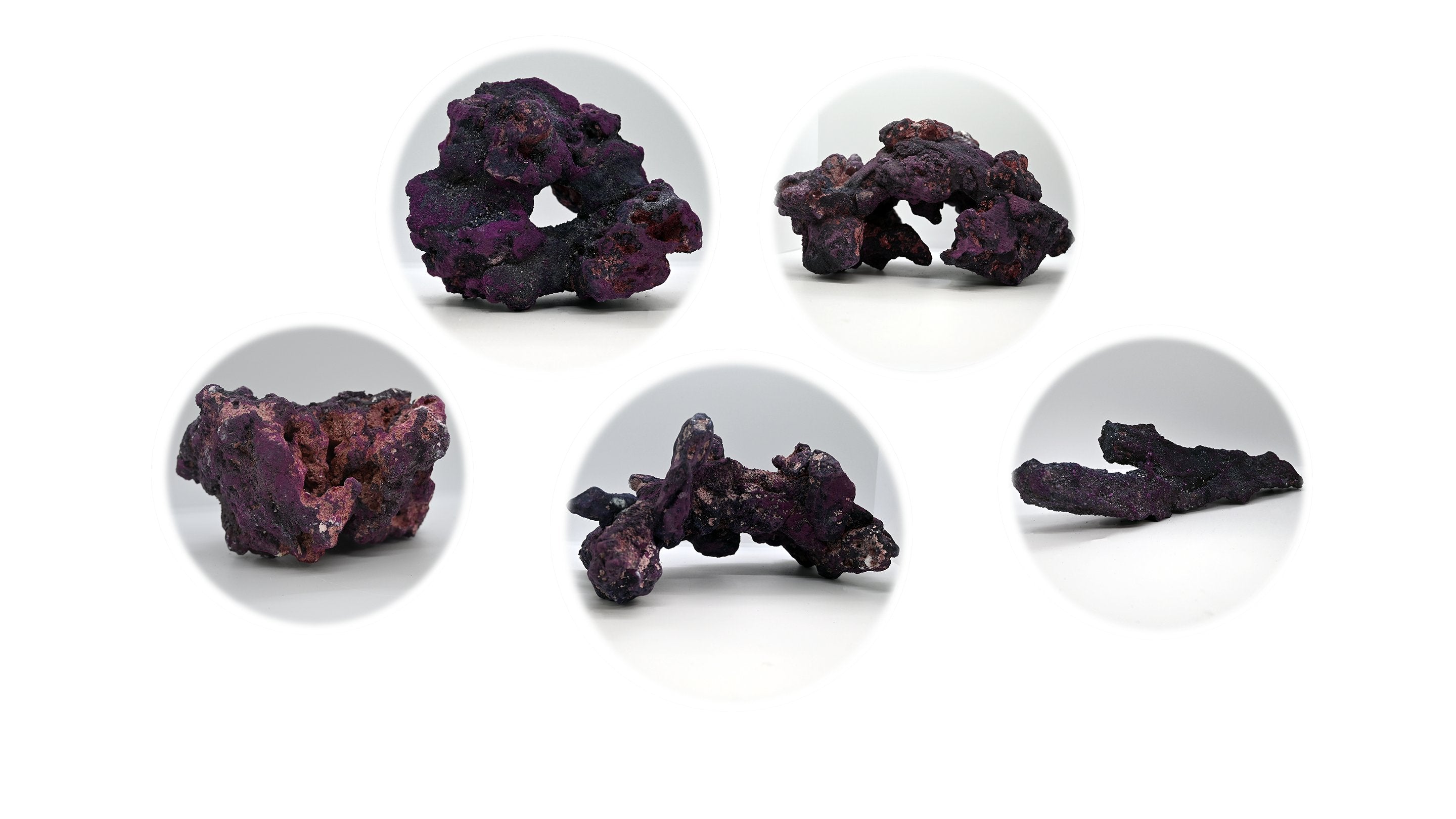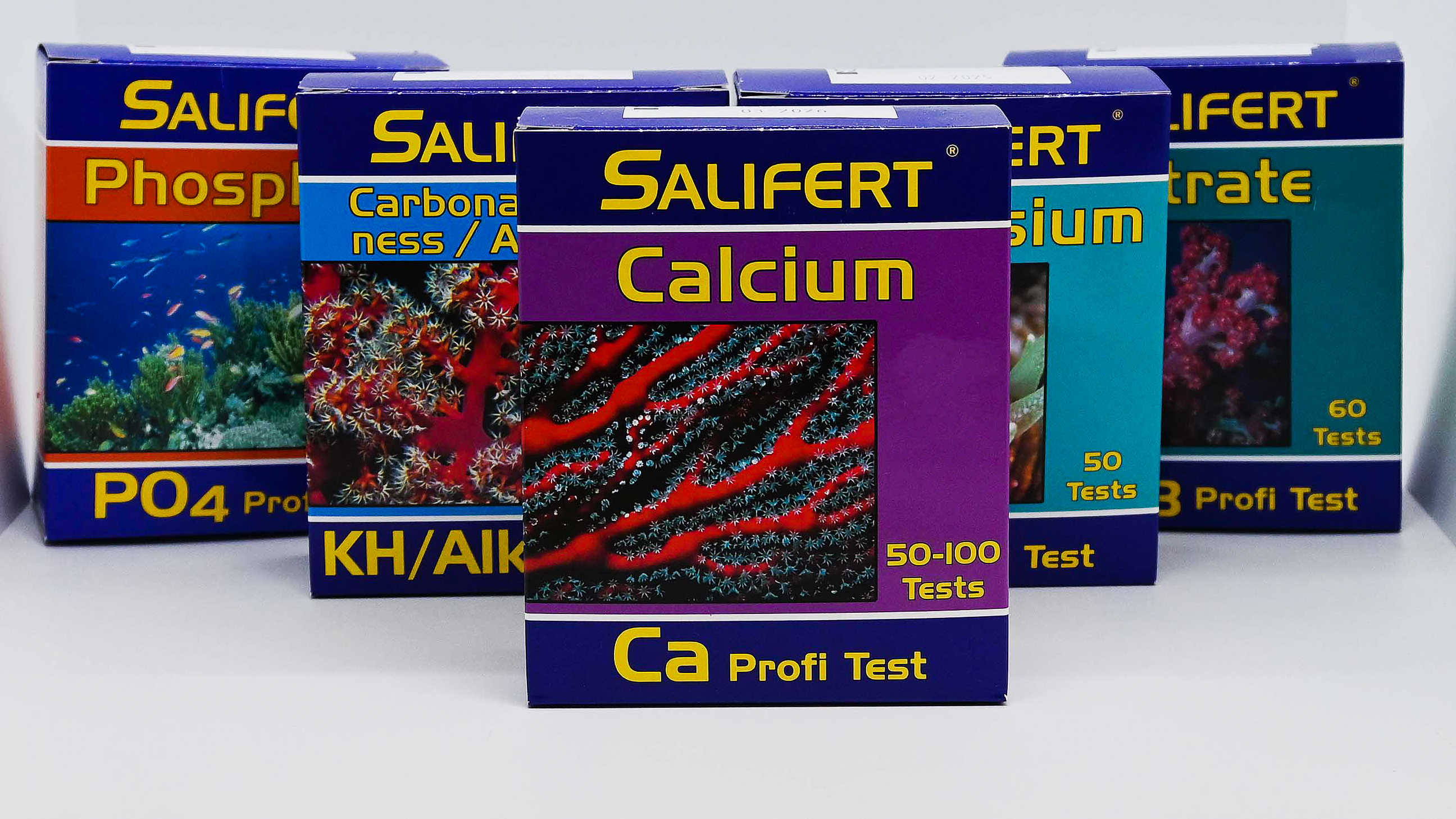
WA Starbomb Acan
- Low stock - 4 items left
- Backordered, shipping soon
The WA Starbomb Acan explodes with color, featuring vibrant orange, green, and red radiating from the center, all encircled by a thin ring of purple. The exterior showcases bold bands of purple and red, adding depth and contrast. This Acan does best in low to moderate light and low flow, with a moderate care level. It follows a rounded, encrusting growth pattern, making it a vivid and compact centerpiece for any reef tank.
Acan Corals (Micromussa lordhowensis), often called Acan Lords or Acanthastrea corals, are some of the most colorful and popular LPS corals in the reef hobby. Their fleshy polyps and vibrant patterns make them a standout addition to aquariums, and they thrive with moderate lighting, gentle flow, and occasional feeding.
Description:
Common Names: Acan Coral, Acan Lord, Micromussa Coral, Acanthastrea Coral
Scientific Name: Micromussa lordhowensis (formerly Acanthastrea lordhowensis)
Family: Lobophylliidae
Temperament: Peaceful
Difficulty: Easy
Note: There has been ongoing controversy regarding the classification of these corals. What was long known in the aquarium trade as “Acanthastrea lordhowensis” was reclassified in 2016 as Micromussa lordhowensis. Many hobbyists and retailers still use “Acan” as the common shorthand.
Native Habitat & Distribution:
Found throughout the Indo-Pacific, particularly around the Great Barrier Reef, Lord Howe Island, and other reef slopes and lagoons with moderate water movement.
Aquarium Care & Setup:
Temperature: 74–80°F (23–27°C)
pH: 8.1–8.4
Salinity: 1.024–1.026
Lighting: Moderate, ideally 50–150 PAR—too much light can cause bleaching, while too little can reduce coloration and growth
Flow: Low to moderate; avoid strong direct flow that prevents polyp extension
Placement: Place on the sandbed or lower rockwork with space around the colony to avoid stinging neighbors
Care Tips & Feeding:
• Feeding: While photosynthetic, they benefit greatly from target feeding meaty foods like mysis, brine shrimp, or coral-specific pellets at night when tentacles extend
• Growth Pattern: Grows as a fleshy, encrusting colony with large, individual polyps
• Tankmates: Keep away from other corals to prevent aggression; compatible with most reef-safe fish and invertebrates
• Behavior: Expands during the day and extends feeding tentacles at night; polyps are highly colorful and sought after by collectors
For more information, check out our Acan & Micromussa Care Guide.
Are Acan corals easy to keep?
Yes, Acan corals are considered easy to care for, and make a great option for beginner stony corals. They tolerate a range of conditions and adapt well to most reef aquariums when given stable water parameters and moderate lighting.
Do Acan corals need to be fed?
While they get energy from photosynthesis, Acans benefit greatly from target feeding. Offering mysis shrimp, brine shrimp, or coral pellets 2–3 times per week helps promote faster growth and brighter coloration.
What lighting do Acan corals need?
They do best under moderate lighting in the range of 50–150 PAR. Too much light can bleach them, while too little may cause them to lose color or recede.
Where should I place Acan corals in my tank?
Acans prefer the sandbed or lower rockwork in areas with low to moderate flow. Give them space from other corals, as their sweeper tentacles can sting nearby colonies.
Will Acan corals fight with other corals?
Acans are generally peaceful, and can be placed directly touching other acans without conflict. They lack sweeper tentacles, and will generally not harm other varieties of coral. Care should be taken to give them proper space away from other more aggressive species.


